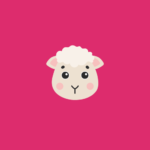In the world as it is now, Artificial Intelligence can generate almost anything with just a couple simple words. From the moment AI was created, it has been adapting and changing
to fit the world
, and now, anyone can access several complex AI engines.
It is almost impossible to tell the difference between AI generated and real photos
since
, with
AI
is continuously
updating and learning to depict people and objects more realistically. However, AI image production is not completely flawless, with many small things that are easy to spot and
can help you to
pin the picture as AI generated. People have already tried to use AI generated images to trick people into believing things that are not real, like Trump being arrested or the Pope discovering a new fashion sense.
AI struggles with hands and fingers, often adding an extra finger or making the hand look not right or too short. It is often hard for
AI
them
to get the hands right, and the weird fingers are usually a quick giveaway that the image is a fake. However, ever since
generating images with
AI was revealed to the world
it
,
AI
has immensely improved its hands and fingers, though it is still an easy way to spot Artificial Intelligence generated images.
Another way to spot AI generated images is to look for garbled text or
made up
made-up
words. AI is coded to create its own unique creations from the words that are entered, so it often mixes up random combinations of letters to create weird text in the image that gives it away. However, AI has been getting a lot better in the small details, and those small methods may become unreliable.
“The problem is we’ve started to cultivate an idea that you can spot these AI-generated images by these little clues. And the clues don’t last,” says Sam Gregory, a member of the nonprofit Witness, which helps people use video and technology to protect human rights.
AI has been generating images that look almost real, but there are still small details in the background that reveal that the pictures are, in fact, fake. However, AI has been updating and working on improving its small flaws, and one day, it will be extremely hard to decide: will AI images become reality?
Article Link:
https://www.bbc.co.uk/bitesize/articles/z6s4239
to fit the world
, and now, anyone can access several complex AI engines.
It is almost impossible to tell the difference between AI generated and real photos
since
, with
AI
is continuously
updating and learning to depict people and objects more realistically. However, AI image production is not completely flawless, with many small things that are easy to spot and
can help you to
pin the picture as AI generated. People have already tried to use AI generated images to trick people into believing things that are not real, like Trump being arrested or the Pope discovering a new fashion sense.
AI struggles with hands and fingers, often adding an extra finger or making the hand look not right or too short. It is often hard for
AI
them
to get the hands right, and the weird fingers are usually a quick giveaway that the image is a fake. However, ever since
generating images with
AI was revealed to the world
it
,
AI
has immensely improved its hands and fingers, though it is still an easy way to spot Artificial Intelligence generated images.
Another way to spot AI generated images is to look for garbled text or
made up
made-up
words. AI is coded to create its own unique creations from the words that are entered, so it often mixes up random combinations of letters to create weird text in the image that gives it away. However, AI has been getting a lot better in the small details, and those small methods may become unreliable.
“The problem is we’ve started to cultivate an idea that you can spot these AI-generated images by these little clues. And the clues don’t last,” says Sam Gregory, a member of the nonprofit Witness, which helps people use video and technology to protect human rights.
AI has been generating images that look almost real, but there are still small details in the background that reveal that the pictures are, in fact, fake. However, AI has been updating and working on improving its small flaws, and one day, it will be extremely hard to decide: will AI images become reality?
Article Link:
https://www.bbc.co.uk/bitesize/articles/z6s4239
